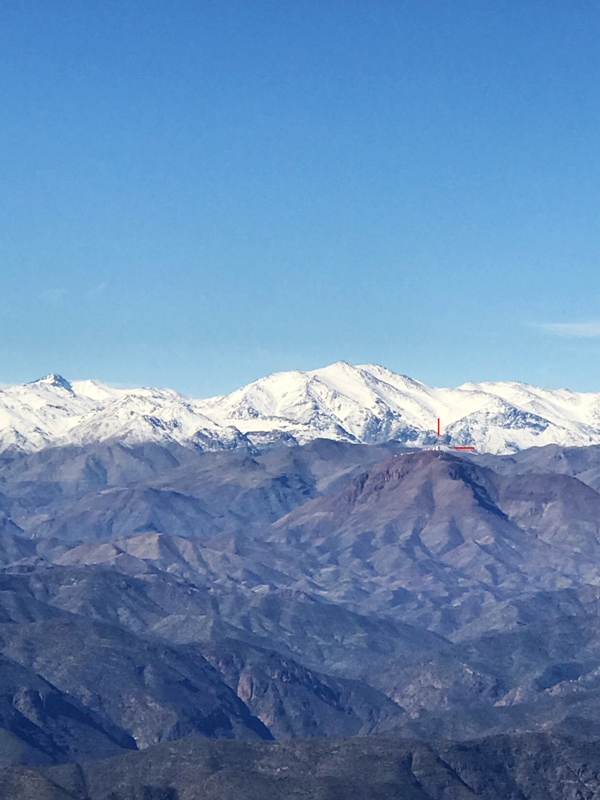
Updated 7/6/17
Gemini/CTIO
High atop a mountain lies the twin observatories of Gemini and CTIO. The two facilities are separated by a steep, winding dirt road. It takes about 45 minutes to drive from one to the other. These observatories are remote. How remote? Check out the picture I snapped on the flight from Santiago to La Serena. I couldn't actually see the observatory; the person next to me told me to point my phone out the window and check the image later.

(Above) This is remote! How in the world are we supposed to get there? Taken from the flight from Santiago to La Serena.
We went to Gemini first. Gemini consists of two domes - a 4 meter and an 8 meter. The control room for the 4 meter is pretty small. It got pretty crowded once we all piled in there.

The scope has adaptive optics.
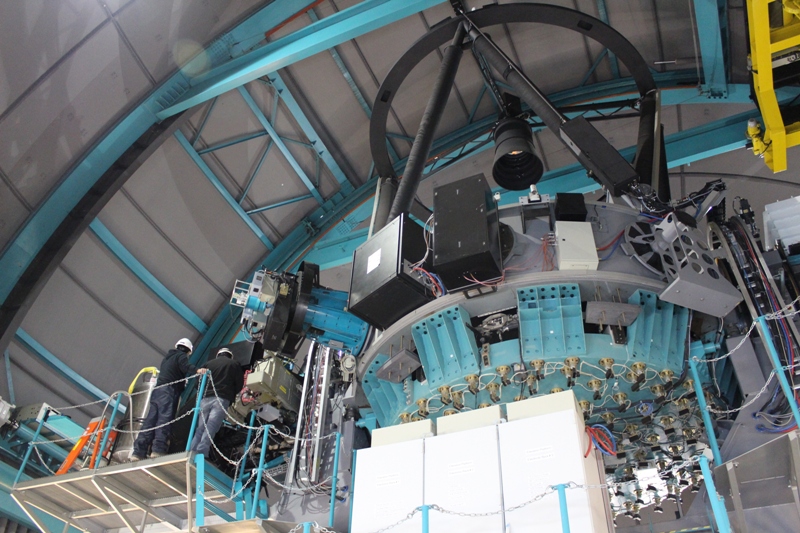
They clean the mirror about once every five years. It takes 5-15 days to run through the cleaning process. They blast the mirror with a compound that uses a lot of CO2. There were tanks of the stuff lying around, with the attendant warning signs. One unfortunate side effect of using the CO2 compound is its tendency to steal all the oxygen from the room. In the case of accidental CO2 release, all personnel are advised to immediately get outside.
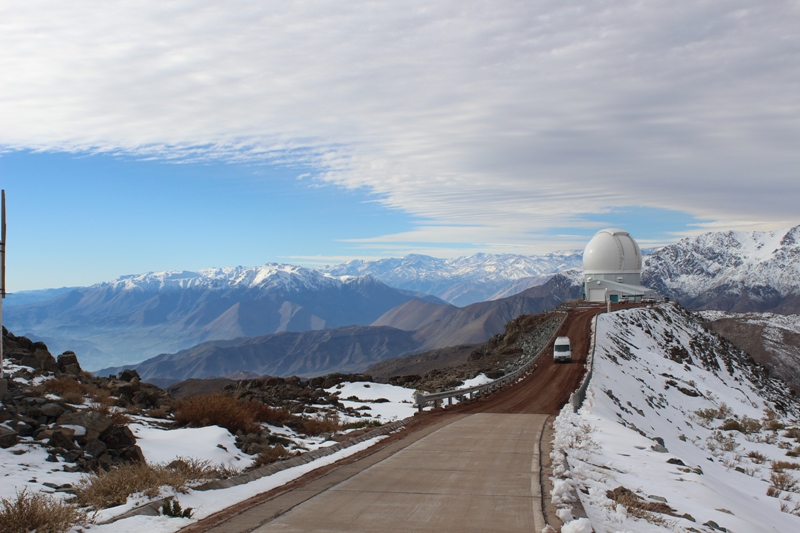
(Above) the short drive from the 4 meter dome to the 8 meter dome. It doesn't look like a long walk, but at 8000 ft, many opted to take the van. In a sign of things to come, I elected to walk. The scenery is stunning. It may not be obvious from these photos, but Gemini sits on a knife-edged prominence of rock with steep dropoffs on both edges. Don't wander too close to the edge!
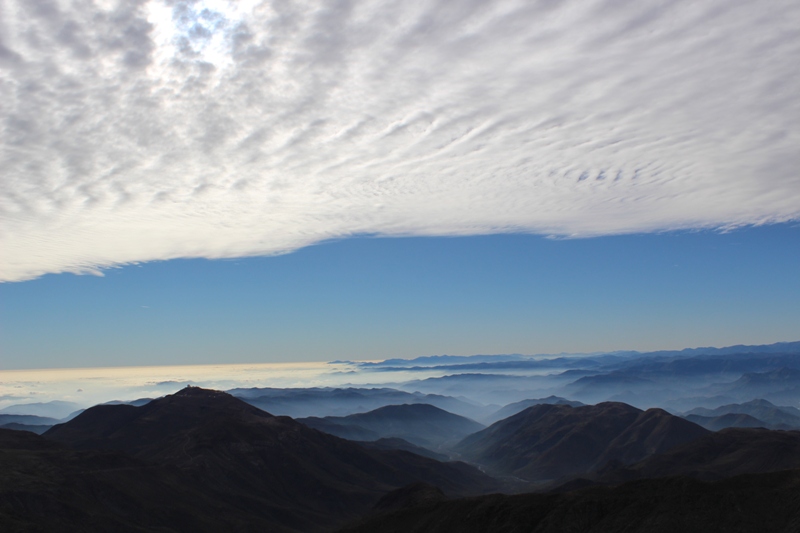

(Above) The edge of the 8 meter dome. Now this is a big telescope.

(Above) The spacious control room of the 8 meter scope. The two large monitors towards the upper right are weather forecasters. We got good at reading those.
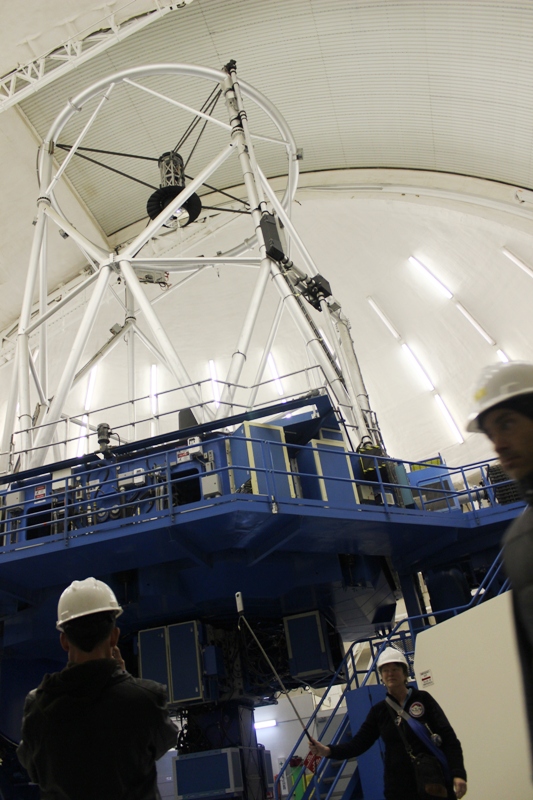

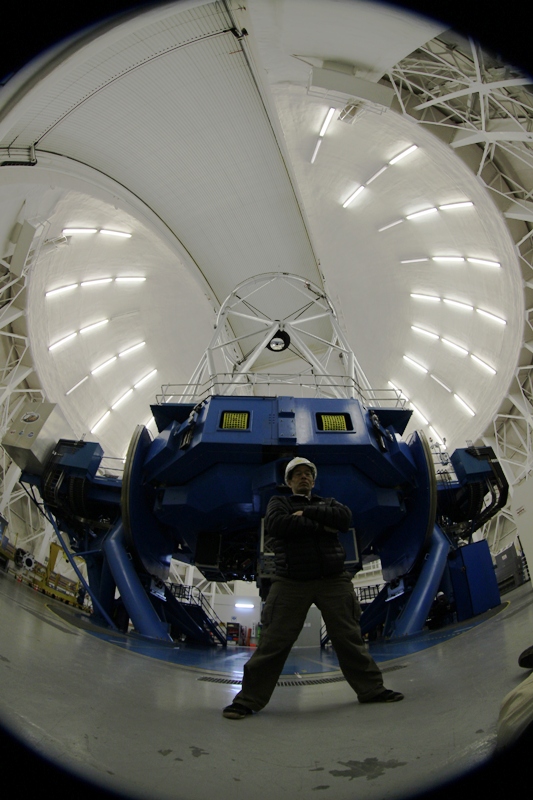
(Above) I needed to borrow Derek's fisheye lens to get the entire scope in one frame.
They opened up the dome and moved it for us. To a person, we got seasick and grabbed on to the nearest handrail. The staff smiled when they saw this. Um...we weren't moving, it was the dome.

(Above) The stunning, dizzying view from the upper part of the 8 meter scope's balcony, through the dome's opening.
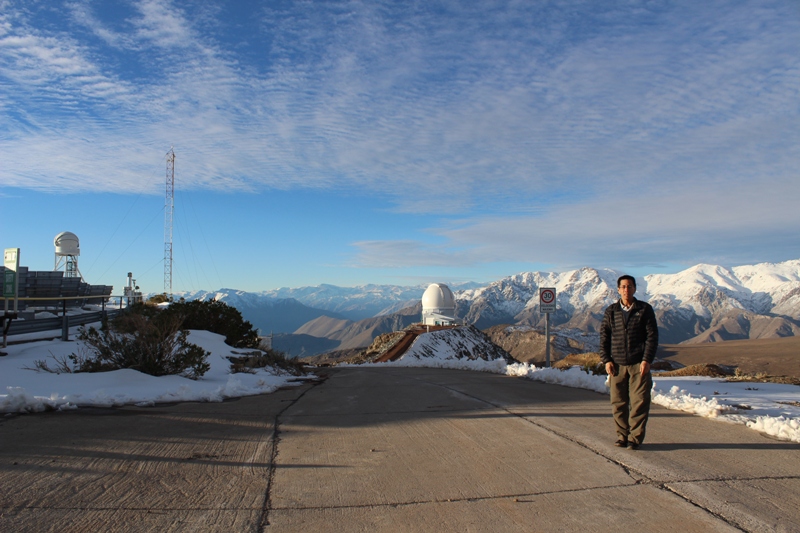
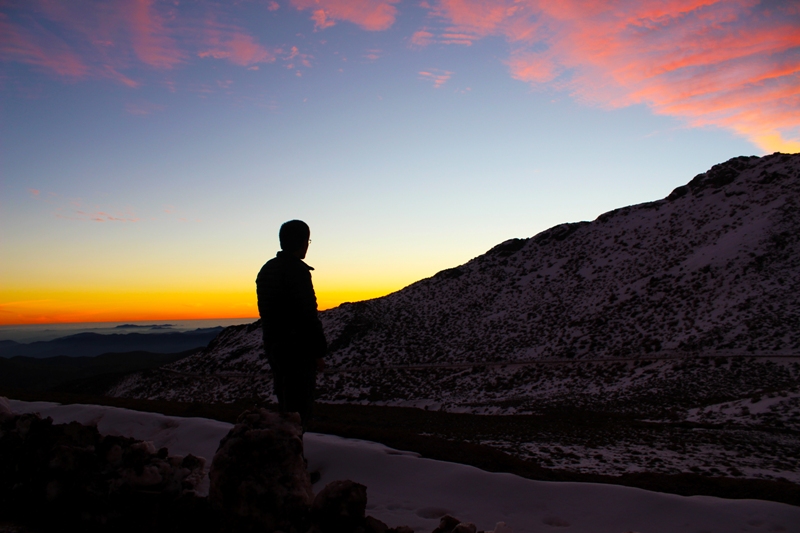
(Above) Sunset at 8000 feet.
At CTIO
The next day we went to the Cerro Tololo Inter-American Observatory, down the dirt road from Gemini. This was my favorite location of the trip. I could have stayed there much longer (hint, hint - anyone over there want to hire me??) We stayed in these charming houses straight out of the 1960s, complete with tacky furniture and shag carpeting. My bed sagged *a lot* in one direction, almost dumping me onto the floor. I didn't care; it was so peaceful up there I found myself just sitting around staring out at the scenery. I daresay this was most people's favorite location as well. There was a lot of smiling and goofing off during the two days we were there.
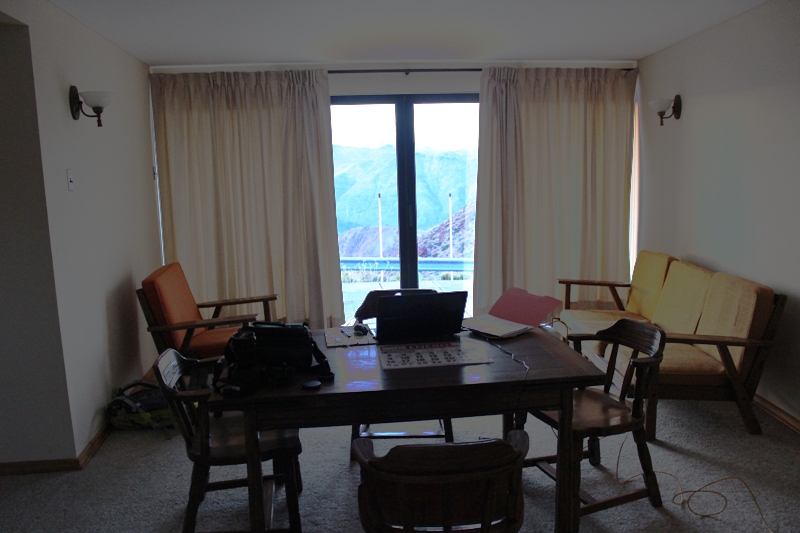
(Above) Our little house down the path from the observatory. Straight out of the 1960s!

(Above) The big dome of CTIO
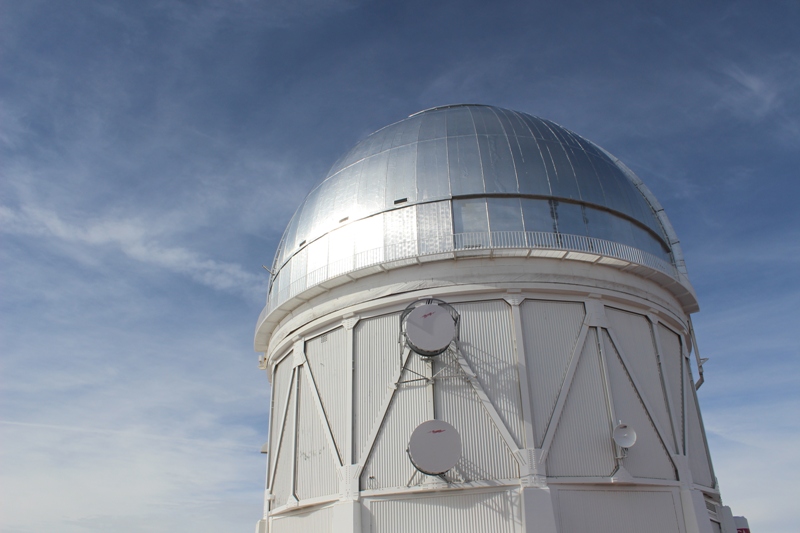
(Above) The big dome up close

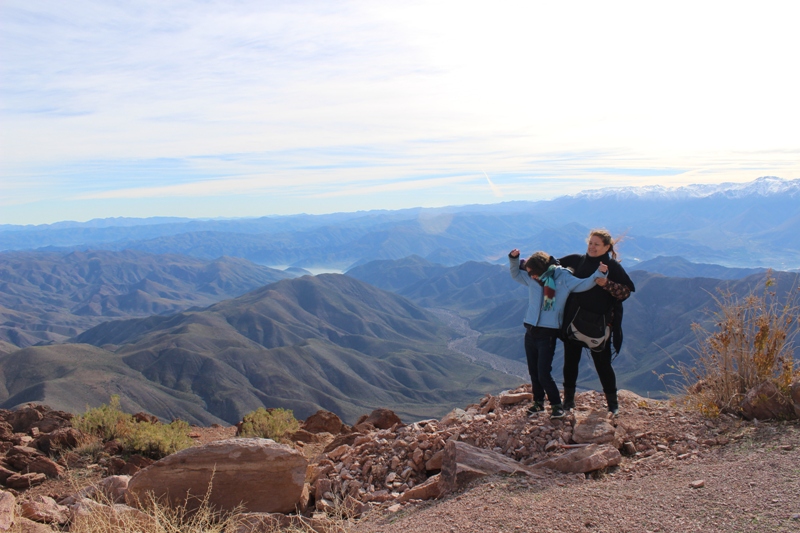
(Above) Having fun at CTIO
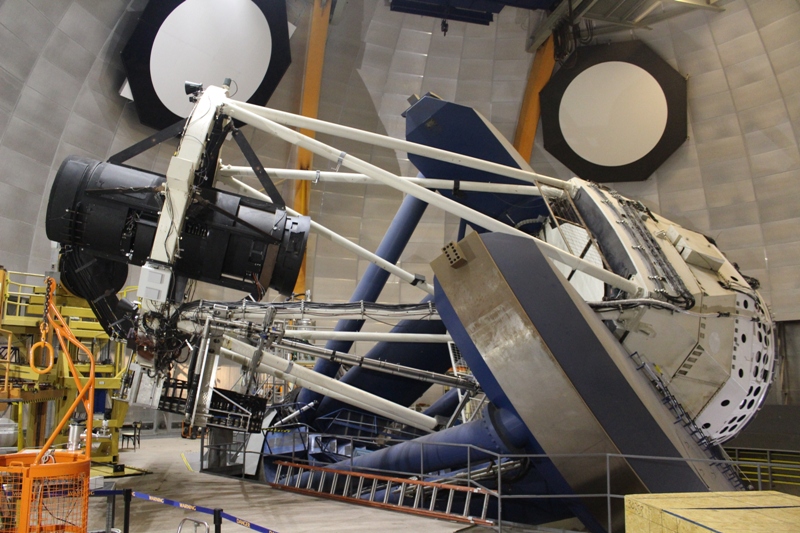
(Above) The 4 meter scope inside CTIO. 4 meters is "small" for such a large dome, but unlike most of the other scopes which are Alt-Az, this one is equatorially-mounted, and as we all know, equatorial mounts require a lot of space. The two white discs near the top are dome flats. Yes, that's right - even professional scopes need to take flats for astrophotography!
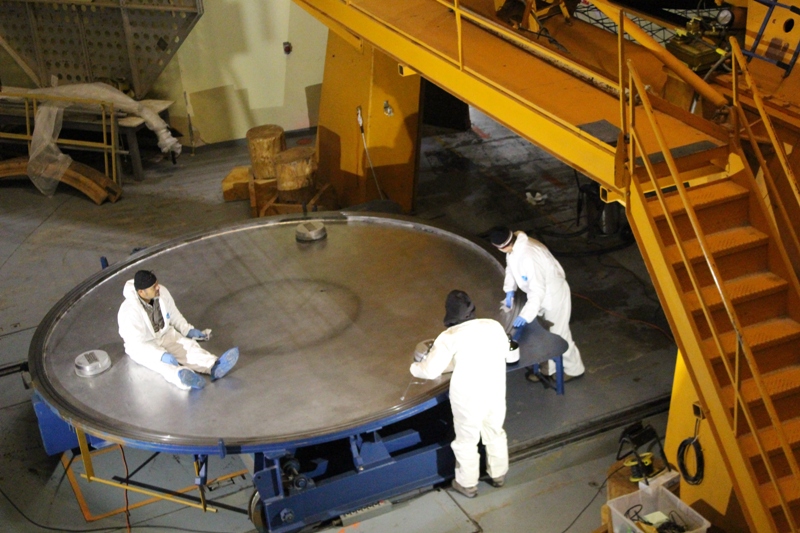
(Above) Are those aliens? No, they're getting ready to clean the mirror!

(Above) Ariel shows off her moves in the lobby of CTIO.
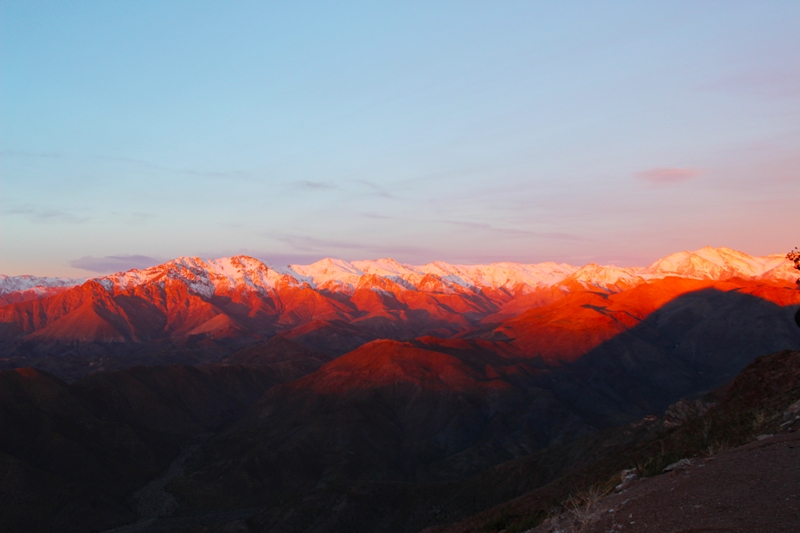
(Above) Sunset at CTIO. I didn't want to leave, and I don't think any of the others wanted to leave either. But we needed to get to ALMA, and that would be another adventure in itself....
Continued on the next page.
-Ed
1) Introduction - Ed Goes to Chile!
2) The cities, towns, and villages - Santiago, La Serena, and San Pedro
3) The observatories and scientific installations (Part 1) (This page)
3a) The observatories and scientific installations (Part 2)